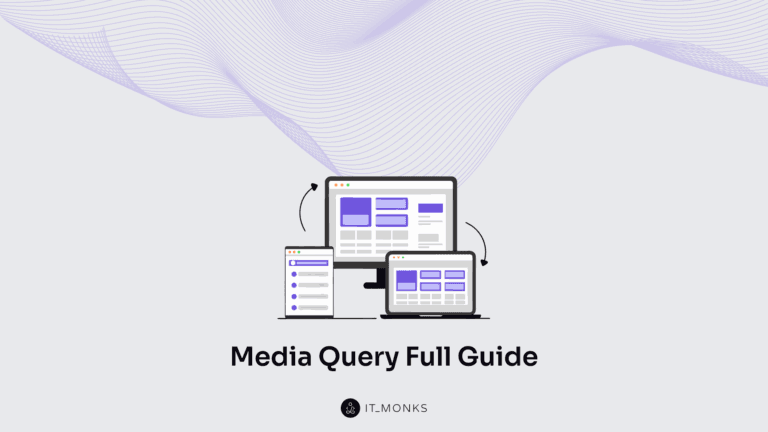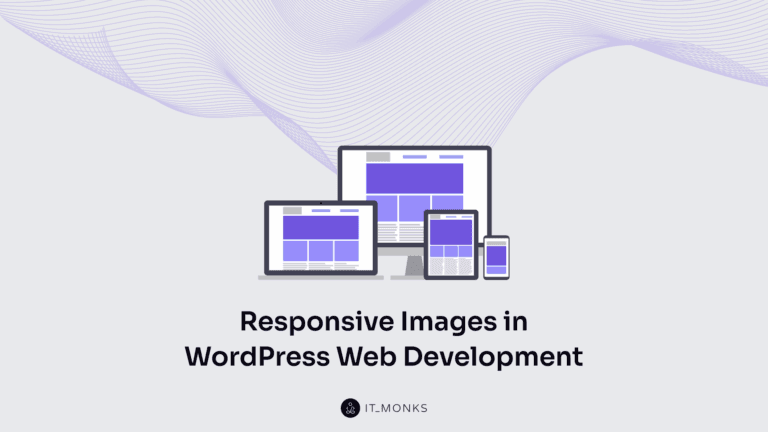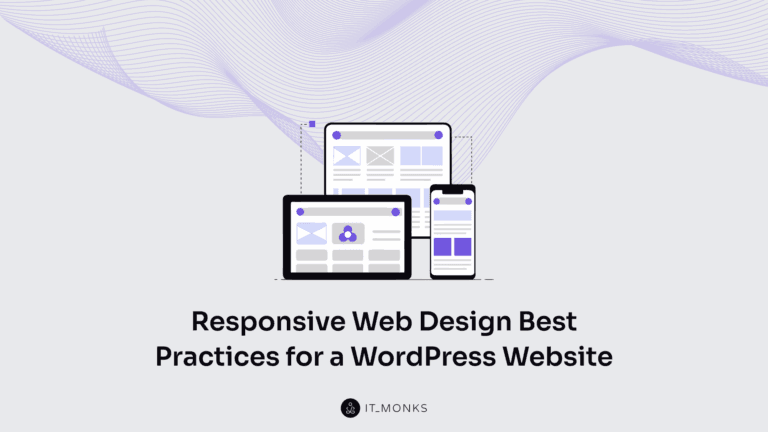WordPress Coding Standards
Table of Contents
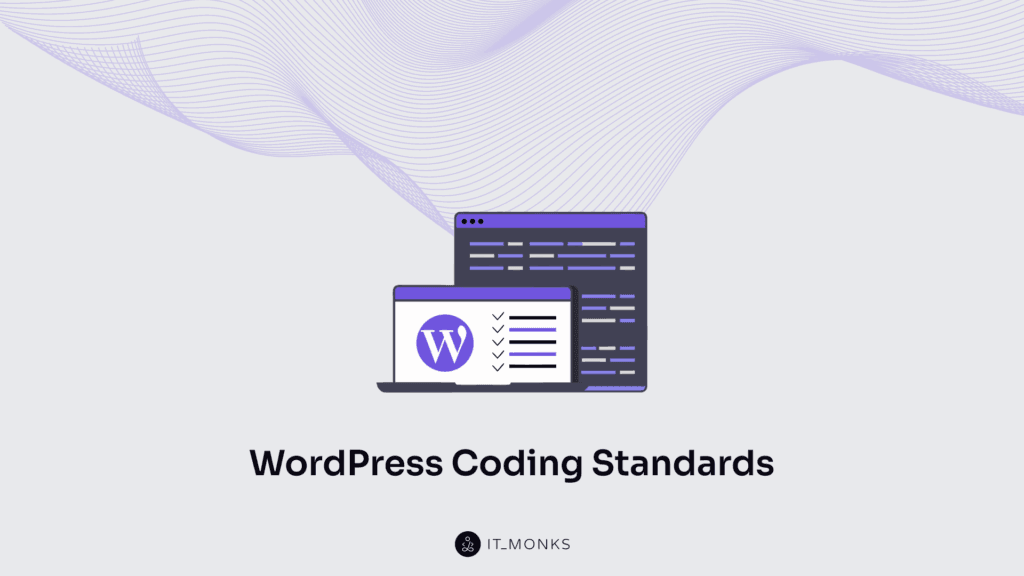
A WordPress website is a site built with the WordPress CMS. Its codebase reflects a structured format shaped by coding standards. These standards enforce consistency, readability, and maintainability throughout the code. They dictate how HTML, CSS, JavaScript, and PHP are used during development.
For example, in HTML and CSS, these standards support better accessibility and semantic layout. In JavaScript and PHP, they improve logic consistency and version control, while also supporting secure and reliable scripting. Inline documentation helps developers share knowledge and keep the project maintainable over time.
The result is clean, readable code that aligns with the practices required by WordPress Core, unifying how developers structure code, document functions, and integrate accessibility across themes, plugins, and custom features.
By following coding standards, developers can avoid confusion, reduce bugs, and maintain a scalable and secure codebase.
What are WordPress Coding Standards?
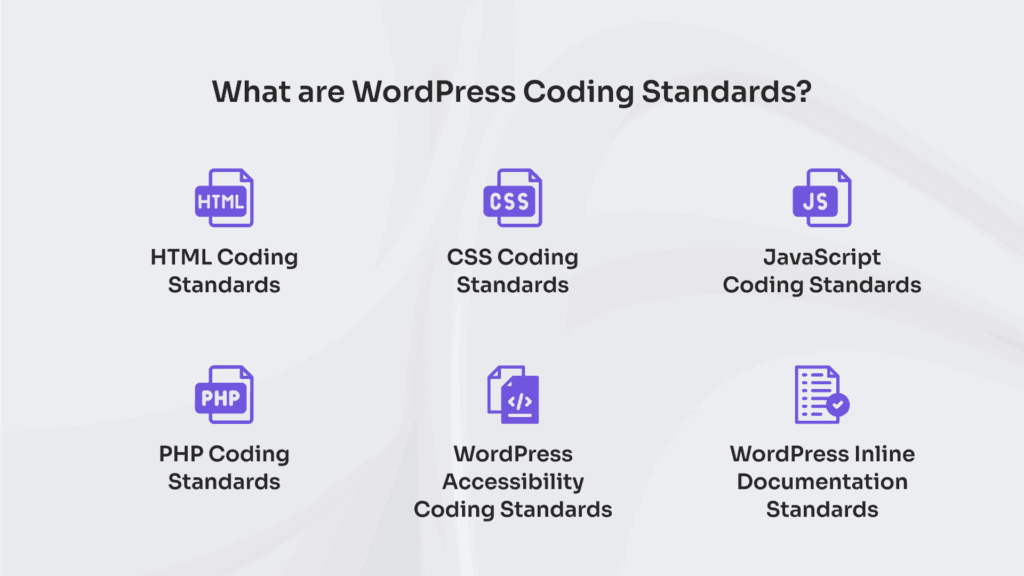
WordPress coding standards (WPCS) are a formalized set of stylistic and syntactic rules for code writing that apply to HTML, CSS, JavaScript, and PHP, and within the WordPress ecosystem. They are established and maintained by the WordPress Core Team to regulate code structure, enforce naming conventions, and standardize formatting.
WordPress coding standards address naming, indentation, spacing, comments, function declarations, and file structure to maintain consistency and clarity. Their purpose is to ensure maintainability, plugin interoperability, and version control compliance. Enforcement is managed through automated tools and linters
Covering each semantic code layer, including HTML, CSS, JavaScript, PHP, accessibility, and documentation, these standards create a uniform WordPress development baseline.
HTML Coding Standards
HTML coding standards in a WordPress website development are based on the HTML5 specification and enforced to ensure a semantic structure, clear markup, and reliable rendering across themes, plugins, and core templates.
WordPress requires clean indentation using two spaces, lowercase tag names, double-quoted attributes, and proper closure of self-contained tags like <img> and <input>, all of which contribute to maintainable code and reliable rendering across environments.
Semantic elements, such as <main>, <section>, <header>, <nav>, <article>, <aside>, and <footer>, are required to define layout containers and content sections, enhancing accessibility and allowing WordPress to correctly interpret and inject dynamic content.
Inline styles are strongly discouraged in favor of enqueued stylesheets, maintaining separation of concerns and ensuring seamless theme switching.
Lists, forms, and layout containers must adhere to a valid element hierarchy and maintain clear markup to prevent breaking accessibility or plugin functionality.
The following example illustrates proper semantic nesting expected in WordPress markup:
<main>
<section>
<header><h2>Title</h2></header>
<article><p>Content</p></article>
</section>
</main>By aligning HTML syntax with WordPress templates and accessibility-first practices, these standards establish a reliable structure for consistent front-end development.
CSS Coding Standards
CSS coding standards in WordPress websites are the structural, formatting, and naming protocols that developers must follow when styling themes and plugins.
To make code readable, consistent, and easy to maintain across the WordPress ecosystem, developers must use 2-space indentation; braces should be placed on the same line as their selectors, and every CSS declaration should end with a trailing semicolon to avoid parsing errors.
Class names should reflect function and avoid being overly specific. Instead of chaining selectors or using IDs, WordPress encourages modular stylesheet structures with reusable classes and flat specificity.
WordPress uses hyphen-separated class names, avoiding camelCase and underscores. For example, .post-title is correct, while .postTitle and .post_title are not. This naming style improves selector clarity and supports scalable, easy-to-maintain code.
Comments should be written clearly using /* */ syntax and used to explain structure or exceptions; inline CSS is discouraged. To keep styles maintainable and accessible, all CSS should be placed in external .css files.
Here’s a simple example that follows all the core rules:
.widget-area {
background-color: #f9f9f9;
padding: 20px;
}This rule set supports not just current compatibility but also prepares stylesheets for scalable and maintainable CSS architectures.
JavaScript Coding Standards
JavaScript coding standards in WordPress website development define formatting, structural, and syntactic rules to ensure consistency, readability, and compatibility across themes and plugins. WordPress requires ES5 syntax to maintain alignment with Core coding practices and support older browsers, explicitly excluding modern features such as arrow functions and modules.
Scripts must follow 2-space indentation, use double quotes for strings, terminate statements with semicolons, and apply curly braces even for single-line blocks, while function and variable names should follow camelCase for semantic consistency. For example:
function toggleMenu() {
var menu = document.getElementById("main-menu");
menu.classList.toggle("active");
}This example reflects all required conventions, including proper indentation and ES5 compliance. Code quality is validated using tools like ESLint or JSHint, with advanced patterns, such as script modularity and async handling, covered in WordPress JavaScript standards documentation.
PHP Coding Standards
WordPress adheres to specific PHP coding standards to maintain consistent and manageable code across themes, plugins, and the core platform. These rules help developers write in the same style, making it easier to read, review, and maintain code over time.
The standards require 4-space indentation, placing opening braces on the next line for functions, classes, and control structures. Operators must have space around them to improve clarity.
Function names use snake_case instead of camelCase, following WordPress Core conventions rather than the PSR-12 standard. Yoda conditions, where constants come before variables in comparisons, such as if (true === $value), help prevent accidental assignments.
Strict typing isn’t used in WordPress core to ensure broad server compatibility; only full <?php tags are permitted to guarantee cross-environment stability.
Every function must include a PHPDoc comment block for documentation, tooling, and future maintenance. Inline comments are allowed when necessary, but should not replace proper function-level docs.
Example of a WordPress-standard function:
/**
* Calculate the total price including tax.
*
* @param float $price Base price.
* @param float $tax_rate Tax rate as a decimal.
* @return float
*/
function calculate_total_price( $price, $tax_rate ) {
return $price + ( $price * $tax_rate );
}This format reflects the enforced structural rules for WordPress PHP code and serves as a baseline for deeper architectural standards, including object-oriented patterns, namespace logic, and modular file organization, outlined in a dedicated seed document.
WordPress Accessibility Coding Standards
WordPress accessibility coding standards require developers to write structured, semantic code that ensures themes, plugins, and custom blocks are usable by screen readers, keyboard-only users, and other assistive technologies. These standards apply to all front-end output and are based on WCAG 2.1 AA, which defines the minimum level of accessibility compliance.
Semantic HTML must be used consistently, including clear heading levels, list tags for grouped content, and sectioning elements to support navigation. Developers must include alt text for all images and ensure that every input field has a visible, associated label. Interactive elements need clear focus states, and the tab order should follow a logical sequence to support keyboard navigation.
When native HTML isn’t enough to convey meaning or state, ARIA roles and landmarks must be added to help assistive technologies interpret the page correctly. Skip links and full keyboard access are required for all interactive components, including menus, modals, and dynamic blocks.
Before release, all interfaces must be tested for screen reader compatibility and keyboard usability by verifying role announcements, label mapping, focus logic, and tab sequence, with upcoming documentation to extend coverage into automated testing and continuous accessibility auditing.
WordPress Inline Documentation Standards
WordPress inline documentation standards require structured comment blocks in PHPDoc format to annotate functions, methods, classes, and custom hooks across all public-facing code in themes, plugins, and core modifications.
Each block must include @param for parameter annotations, @return for output types, @since for version tagging, and optionally @see for related references, ensuring PHPDoc compliance and consistent formatting.
These documentation blocks support code parsing tools and IDEs by enabling autocompletion, navigation, and validation. Their structure is enforced during coding reviews, where misaligned or missing tags are flagged. Spacing and alignment must follow the WordPress developer handbook to maintain codebase readability.
Tools for WordPress Coding Standards
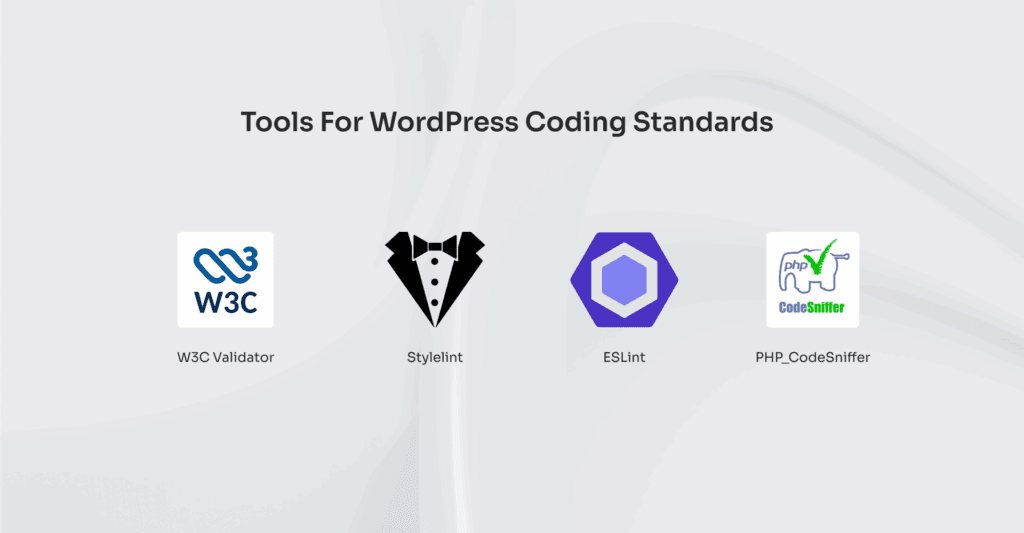
Tools that support WordPress coding standards enforce structural, stylistic, and semantic rules across HTML, CSS, JavaScript, and PHP through static code analysis, which validates syntax, detects formatting issues, and ensures output consistency in themes and plugins.
Integrated into development workflows, these tools align code with WordPress.org review standards, aiding early error detection, long-term maintainability, and standard compliance.
Each tool applies to a specific language layer: the W3C Validator validates HTML markup for semantic accuracy and compatibility, Stylelint checks CSS for linting and formatting consistency, ESLint enforces JavaScript syntax and behavioral patterns, and PHP_CodeSniffer ensures PHP adheres to WordPress-specific structures and readability norms.
These tools function as language-specific enforcement mechanisms wired into the WordPress pipeline, upholding code quality, accessibility, and compatibility.
W3C Validator
The W3C Validator is a web-based tool that validates the HTML5 markup structure of a WordPress website against the official W3C standards. It checks theme and plugin outputs for structural compliance by verifying proper tag nesting, semantic element accuracy, and the absence of deprecated or malformed syntax.
The validator detects common markup issues, such as missing tags or incorrect nesting, which are crucial for maintaining structural consistency and semantic clarity across browsers. In WordPress development, it supports adherence to HTML coding standards by flagging syntax errors that can compromise accessibility or visual layout across different rendering environments.
Though not a build tool, it acts as a final checkpoint to confirm that the HTML output of WordPress themes and plugins meets the baseline quality required for public distribution or submission to WordPress.org.
Stylelint
Stylelint is a CSS linter used in WordPress website development to enforce coding standards across theme and plugin stylesheets by scanning for syntax errors, formatting inconsistencies, and violations such as improper nesting, incorrect selector patterns, or deviation from 2-space indentation, brace alignment, and property order.
It ensures structural consistency, improves readability, and supports collaborative development by standardizing code before deployment through both manual checks and automated workflows, such as CI/CD and pre-commit hooks, aligning each stylesheet with WordPress styling expectations.
ESLint
ESLint enforces JavaScript coding standards within WordPress website development by scanning theme and plugin files for alignment with ES5 syntax, camelCase naming conventions, double-quoted strings, proper semicolon use, and consistent brace formatting.
Through automated linting and static analysis, it detects syntax errors, logic flaws, and formatting violations, supporting code uniformity and readability across the ecosystem.
Integrated into pre-commit hooks and CI pipelines, each linting result acts as a pass or fail checkpoint to validate code compliance before deployment, with configuration specifics addressed in the dedicated ESLint documentation.
PHP_CodeSniffer
PHP_CodeSniffer is a static code analysis tool that enforces WordPress-specific PHP coding standards by scanning theme and plugin files for deviations from the WordPress-Core and WordPress-Extra rulesets.
It validates 4-space indentation, brace positioning, operator spacing, and snake_case function naming to maintain consistency with Core architecture and review expectations.
What if Violate WordPress Code Standards?
Violating WordPress coding standards during website development can lead to structural non-compliance, reduce code readability, introduce inconsistent logic, and increase the risk of bugs.
In the codebase, this results in a loss of readability, inconsistent logic, and an increased risk of bugs, making maintenance and collaboration more challenging. Automated tools like PHP_CodeSniffer, ESLint, and Stylelint flag deviations during development or CI, and unresolved linter error flags can block commits, fail builds, or halt deployments.
Within repository workflows, repeated violations trigger code review failures, reduce delivery speed, and compromise team velocity.
These standards are quality gates essential for compatibility, maintainability, and functional stability across the WordPress ecosystem.
Contact
Don't like forms?
Shoot us an email at [email protected]

Send a Project Brief
You need to load content from reCAPTCHA to submit the form. Please note that doing so will share data with third-party providers.
More InformationYou are currently viewing a placeholder content from Turnstile. To access the actual content, click the button below. Please note that doing so will share data with third-party providers.
More InformationYou are currently viewing a placeholder content from Facebook. To access the actual content, click the button below. Please note that doing so will share data with third-party providers.
More InformationYou are currently viewing a placeholder content from Instagram. To access the actual content, click the button below. Please note that doing so will share data with third-party providers.
More InformationYou are currently viewing a placeholder content from X. To access the actual content, click the button below. Please note that doing so will share data with third-party providers.
More Information
